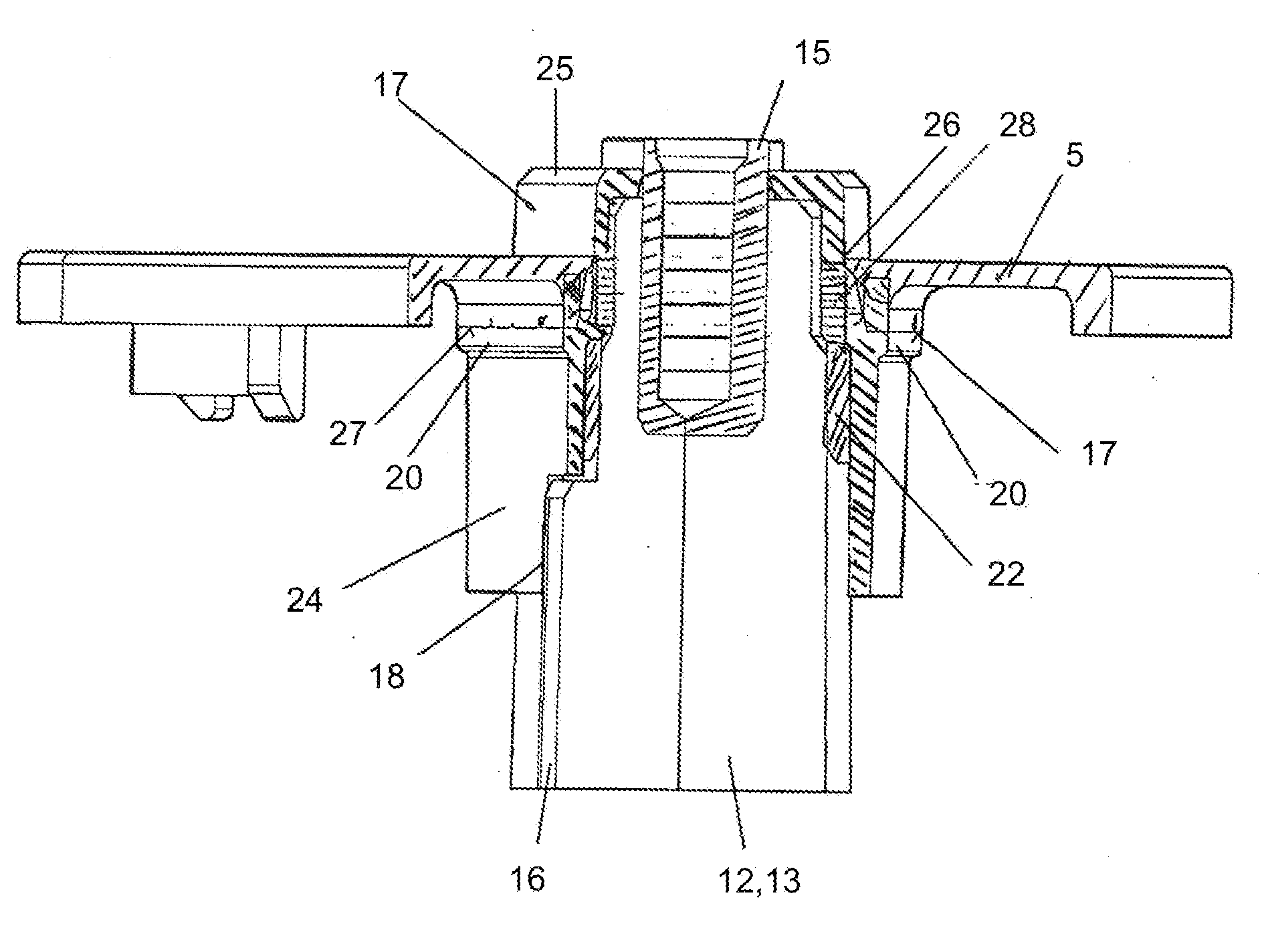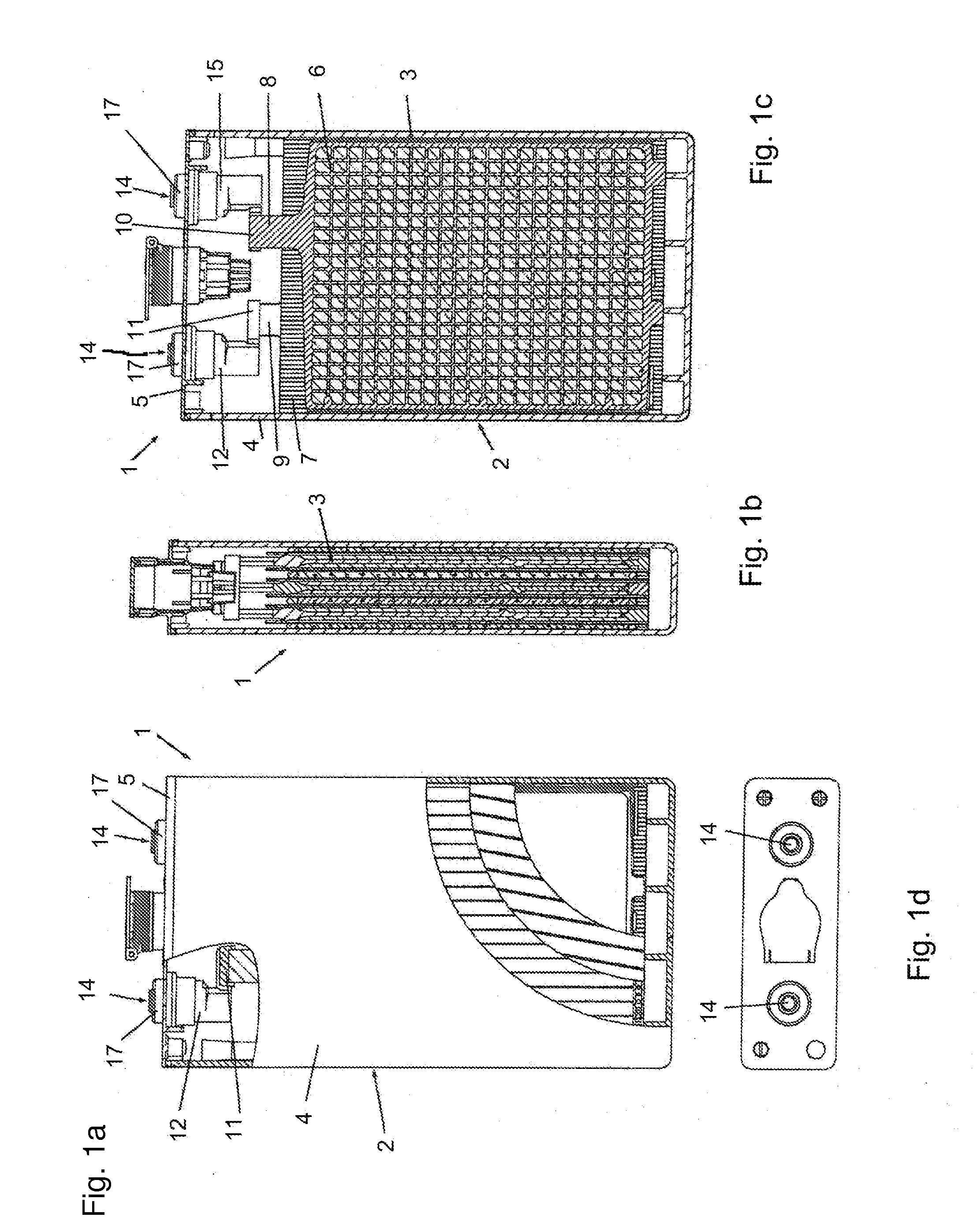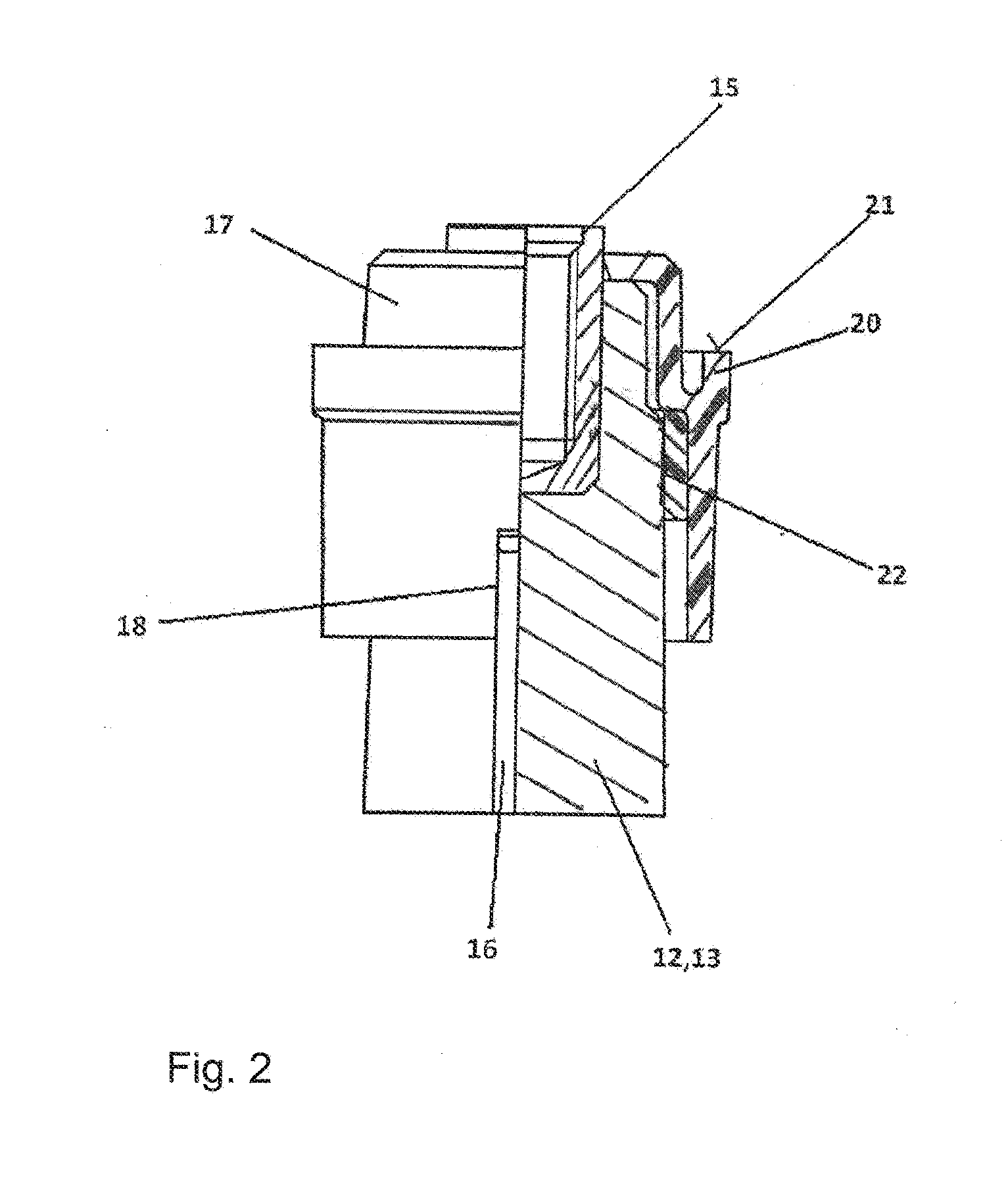Battery Cell for a Battery, Especially for a Traction Battery
a battery and battery technology, applied in the direction of batteries, cell components, current conducting connections, etc., can solve the problems of undesirable leakage, non-uniform contact between the sealing sleeve and the associated terminal, and inconvenient manufacturing process, so as to avoid stress whitening, reduce the risk of contact tabs and/or cell connectors possibly breaking off, and reduce the risk of corrosion
- Summary
- Abstract
- Description
- Claims
- Application Information
AI Technical Summary
Benefits of technology
Problems solved by technology
Method used
Image
Examples
Embodiment Construction
[0043]FIGS. 1a to 1d show in schematic illustrations a battery cell 1 according to the invention.
[0044]The battery cell 1 comprises a casing 2. The casing 2 comprises a casing box 4 and a casing cover 5 that in the final mounted state fluid-tightly closes off the casing box 4. The casing box 4 and the casing cover 5 are preferably connected by welding or fusing to each other.
[0045]Within the casing 2, an electrode plate pack 3 is arranged. The pack 3 is comprised of alternatingly arranged positive electrode plates 6 and negative electrode plates 7. The electrode plates 6 and 7 comprise contact tabs at the side facing the casing cover 5, wherein the positive electrode plates 6 are provided with contact tabs 8 and the negative electrode plates 7 are provided with contact tabs 9. By means of a common cell connector 10 or 11, respectively, the contact tabs 8 or contact tabs 9 are electrically coupled to each other. Each cell connector 10 or 11 supports a terminal 12 or 13, wherein the c...
PUM
| Property | Measurement | Unit |
|---|---|---|
| output voltage | aaaaa | aaaaa |
| output voltage | aaaaa | aaaaa |
| output voltage | aaaaa | aaaaa |
Abstract
Description
Claims
Application Information
 Login to View More
Login to View More - R&D
- Intellectual Property
- Life Sciences
- Materials
- Tech Scout
- Unparalleled Data Quality
- Higher Quality Content
- 60% Fewer Hallucinations
Browse by: Latest US Patents, China's latest patents, Technical Efficacy Thesaurus, Application Domain, Technology Topic, Popular Technical Reports.
© 2025 PatSnap. All rights reserved.Legal|Privacy policy|Modern Slavery Act Transparency Statement|Sitemap|About US| Contact US: help@patsnap.com



